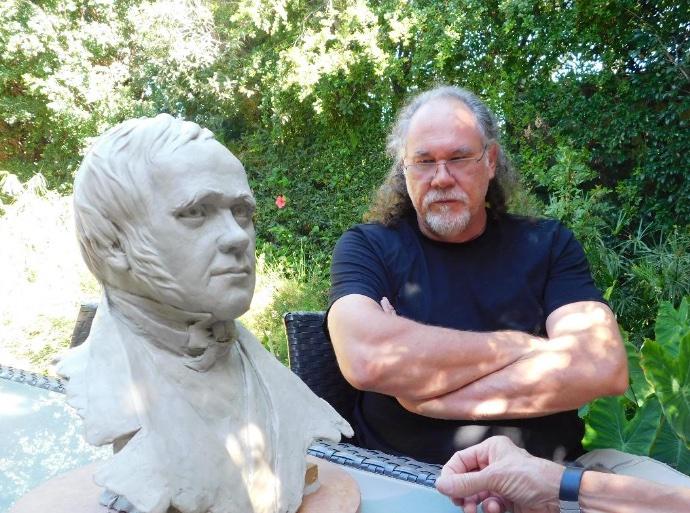
You are invited to contribute to the Charles Darwin Memorial Fund that will make it possible for a bronze bust of a young Charles Darwin to be displayed on Simon’s Town Jetty in Simon’s Town. The clay maquette for this bust has been created by the renowned Cape Town sculptor, Johan Steyn.
The institutional home for the project is the Geological Society of South Africa, which has provided a ring-fenced bank account and will administer the donated funds. The project also has the support of the Cape Town Heritage Foundation, Overberg Geosciences Group and the Simon’s Town Historical Society. A subcommittee has been formed to oversee the long-term maintenance and use of the Darwin statue.
Donations should be deposited into Standard Bank account number 022 721 444 GSSA-DPP at the Eloff Street branch of Standard Bank, Johannesburg, branch code 051 001, with the name and email address of the donor and the reference ‘Darwin’.
Please donate generously. All donations will be acknowledged. Donors will be updated on the progress of the fund-raising campaign and will be invited to the unveiling ceremony.
Motivation for the mounting of a bust of Charles Darwin in Simon’s Town
Charles Darwin’s 19-day visit to the Cape of Good Hope in May/June 1836 during the five-year voyage of HMS Beagle was the first opportunity he had to discuss his embryonic ideas on evolution with knowledgeable, English-speaking scientists. In particular, his discussions with the astronomer/natural philosopher, Sir John Herschel, in the Cape were crucially important to the development of his ground-breaking Theory of Evolution by Natural Selection.
Darwin had a thorough understanding of geology when he embarked on the five-year voyage of HMS Beagle in December 1831. During the voyage he collected vast amounts of data as well as fossils and plant and animal specimens that allowed him to eventually develop his Theory of Evolution.
His insights into geology made him realize that, contrary to contemporary teaching, the Earth is much older than previously thought and that its crust is constantly changing through the physical forces that are still active today. He realized that, if the physical environment is changing, plants and animals would also need to change in order to be well adapted, thrive, breed, and pass their genes on to the next generation.
Darwin’s discussions with Herschel on this ‘Mystery of mysteries’ enabled him to crystallize his ideas. He also took Herchel’s advice that he should use his data not only for descriptive purposes but also to propose and test a ‘big idea’. Darwin shaped the rest of his career around the wise advice that Herschel gave him in the Cape.
The bust of Charles Darwin, which depicts the 27-year-old naturalist as he looked in June 1836, in the sculptural style of the 1830s, will commemorate the important role that his visit to the Cape of Good Hope played in the development of one of the most influential theories in the history of science.
We look forward to your support of this important project.
Dr Craig Smith, Executive Manager | Geological Society of South Africa | info@gssa.org.za
Professor Mike Bruton | Project Manager | mikefishesbruton@gmail.com
Disclaimer: Any views expressed by individuals and organisations are their own and do not in any way represent the views of The Heritage Portal.
